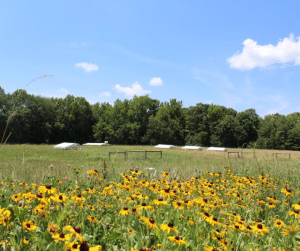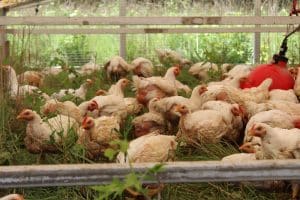Seasonal Eating Guide: Fall Edition
Welcome to the Fall Edition of the Seasonal Eating Guide, from your year-round farmers market!
In this segment of the Fall Guide, you’ll get to meet the young Amish family of Spring Creek Meadows. They rely on manpower, horses, and regenerative farming practices to raise their livestock, including turkeys for Thanksgiving!
For more insights and tips on seasonal eating, be sure to check out the Fall Guide’s other segments:
- How to Get Your Healthy On – for You & the Ecosystem takes a closer look at how eating seasonally puts your body in sync with what Mother Nature provides, season by season.
- If It Grows Together, It Goes Together draws on ancient wisdom to help you make the most of eating seasonally this Fall.
- It’s Soup Season! goes on a deep dive into Fall’s number one comfort food, complete with recipes, including bone broth.
- Benefits & Uses of Fall’s Produce Powerhouses lists Fall favorites, their nutritional benefits, harvest time, and the different ways they can be used.
Meet an Amish Family of Regenerative Farmers
Enos and Catherine King and their five children raise turkeys, chickens, ducks, sheep, and cattle near Farmville, Va. They’re just the kind of family farmers we love to support! They’re working hard to bring you nutrient-dense, organically-raised fresh foods while regenerating the land at the same time.
Their regenerative farming practices involve rotationally grazing their animals, organically growing their pastures, and encouraging diversity among plants. Their goal is to restore the soil’s health, the animals’ health, and our human microbiome.

As members of the Amish religious community, they manage all their land using manpower and horses. They also get a little help from their non-Amish admin team.
Here’s Enos with the story of Spring Creek Meadows regenerative farm, in his own words:
“I grew up with a small conventional chicken house (6,000 birds) hosted on my [Amish] family’s land. I liked the birds, but the way we raised those chickens was not appealing to me – if I were to venture into the chicken house, my eyes and lungs would burn, so foul was the smell. I never expected to be raising poultry when I grew up, mainly because of that.
“As an adult, what really planted the idea of raising poultry was my reading of Joel Salatin’s books. From Joel’s books, we learned about how rotational grazing, especially with multiple species, improves both soil and animal health. We learned that the biggest benefit of rotational grazing is as a land improvement tool. He taught us that, by boosting the fertility in our land, we would then improve animal vitality, and, as a result, human nutrition.
“My wife and I thought it sounded like a great idea, and we thought we’d try it out. We knew this was our dream even before we moved to Virginia, back when we had a one-acre property in Pennsylvania.
“I remember helping Mom butcher a few of the chickens (the ones we did not sell), and their livers did not look at all healthy – not bright, like mine do now. Those conventional chickens had a pale or sometimes spotty liver. The difference in my chickens’ liver color is proof that my poultry is healthier. I also like the way my chickens smell, much better.
“Another difference which I am sure affects the quality of the meat is the slaughtering and butchering process. I have wondered to myself, when looking at the supermarket shelves, about what those birds go through in the slaughtering process. A big difference in the taste is likely in the processing. They dip the poultry in a bleach bath, as they are required to sterilize the meat. Sterilization takes all the good stuff out of the meat.
“I slaughter and butcher by hand here on the farm, which means I am there the day the poultry come onto my land as day-old chicks, and I am there the day they go out as meat to be eaten. Since I am not required to sterilize my meat (I have an on-farm exemption within the state of Virginia), it retains its nutrient-rich, farm-fresh qualities.
“Another big thing that I noticed is that Dad was required to open the chicken barn up at some point, because they wanted to put a label on the chickens (i.e. ‘free range’). What was interesting is that even though the chicken barn was open, those chickens barely went outside of the barn. They sat next to their feed bowls and stayed inside. So even if their label changed, their lifestyle didn’t change much.
“With the model of farming I am employing now, the chickens are outside on grass, moving from one place to the next, eating fresh grass every day. If they were just outside, and not being moved around every day, they would trample the grass down until it was nearly gone, and they would sleep on their poop piles.
“So the chickens and turkeys are in mobile coops which are moved twice a day, once in the morning and once in the evening. They are (happily) forced to eat new grass, to poop on new areas (which, in turn, boosts [soil] fertility).
“If you have healthier soil, you have healthier animals, and vice versa. You can manage your animals in a way to help build up the soil. Animals can ruin soil health, AND animals can help soil health. It’s all in how you manage them.
“My pastures don’t look pretty all the time, but there are tons of bugs. I do have tall grass, weeds, and there are bugs jumping and flying all over the place. It’s fun to watch the chickens and turkeys get onto a fresh patch. They are always running here and there to catch grasshoppers and bugs for themselves. They also love the clover in the pasture. They are eating 50% less feed than my neighbor’s poultry! My chickens and turkeys are supplementally fed non-GMO, soy-free, corn-free, chemical-free local feed. We never use antibiotics, wormers, growth hormones, or vaccines.

“I imagine the poultry are much more nutrient-dense due to the food they have been eating. From what other farmers are saying, the meat can be up to five times more nutrient-dense, and even more for some minerals, in these frequently-moved pastured chicken.
“What I am doing with the poultry, which is a form of management-intensive rotational grazing, would best be labeled as ‘pasture-raised’ or ‘foraged’. The main reason I use a movable coop rather than ‘free-ranging’ my poultry is because of predators. ‘Free-range’ birds have no physical barriers to predators. With 1,000 birds, and no guardian dog, my birds are very vulnerable to attacks from the ground, or from the sky. Such an attack (owl, coyote, etc) can quickly destroy a flock of chickens. So I opt to use spacious mobile coops and give them protection, while giving them as much fresh air, fresh grass, fresh bugs as they want.
“I like being close to home because I get to have daily chore time with my children. My 2-year-old daughter loves helping me with chores. She’ll go to the other end [of the portable chicken coop] and push for me, and we move the chickens that way. That is a lot of fun for me.”
“I think it’s exciting to have the opportunity to provide this food to people, and when I think about the difference between the two systems (growing up with a poultry barn and now raising chicken in a rotational pastured regenerative manner), I feel happy that I get to farm like this.”
About Seasonal Roots
Since 2011, Seasonal Roots’ online farmers market has connected Virginia families with local family farmers who use sustainable, humane practices. Our neighborhood market managers – who believe in living better through scrumptious, healthy eating, being kind to animals, protecting the environment, and spreading joy – home-deliver freshly harvested produce, pastured eggs, grass fed dairy and meat, plus artisan fare. We empower our members to eat better and live better with more nutritious, flavorful food that’s good for us and good for the planet. More info at seasonalroots.com.